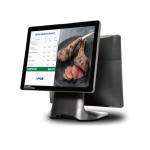No products in the cart.

No matter the type of business you may run, inventory management is a beneficial skill. Inventory management is the keeping track of your stocked goods and monitoring its movements. Doing so will give you an idea of when to replenish your products and in its exact volume.
It’s a balancing act: ensuring that there is enough to meet the demands of your customers without incurring any unnecessary costs from a potential overstocking.
There are several inventory control methods that you may want to consider implementing. Hence, here are just some of a few that we have gathered.
Establish Par Levels
Establishing par levels of your products is vital to your business. You will need to know the minimum amount of product that needs to be available at all times. Once your stocks dive below your par level, it is time to order more of that product.
Do take note that these par levels will defer by products based on their respective demands. On your side, you will need to do research and up-front work for an extended period, to get a feel of the consumer flow. Even then, demand may change according to circumstances so you will need to be able to predict the potential demand for your product accurately.
First In First Out (FIFO)
As the most straightforward approach, first in first out (FIFO) is a process that requires you to sell your oldest stock in your inventory before your newer ones. By doing so, this will give you an inkling of which of the products you will need to order and stock up next.
While it is practised for retailers in the food and beverages industry, it is a practice that benefits those not from the said industry. You’d want to be kept updated with things such as packaging design or a change in its production.
FIFO also helps to stretch your profit margins, as older products generally cost lower than newer ones.
Last In First Out (LIFO)
The direct opposite, (LIFO) is an approach that lets you sell the items that are new to your inventory. Even though LIFO is an uncommon practice, it’s used when prices have been increasing steadily. This translates to a lower profit; since they will be priced at a higher cost at the time of purchase, thus lower taxable income.
Manage Supplier Relationships
Having a good relationship with your suppliers is recommended not only because it’s proper etiquette, but it helps to boost your inventory management. By practising clear communication with your suppliers, this gives you more room to adapt and readjust should there be any changes. For instance, you may engage in another supplier if your current one is unavailable to provide you with the products.
Being transparent with your suppliers will give them more incentives to work and cooperate with you, inadvertently giving you stronger sales.
Prepare a Backup Plan
Within the retail industry, challenges are abundant. You may find yourself with a shortage in stock, or a product has unexpectedly discontinued, or a product is not manufactured on time. There are countless possibilities of it going awry, but you will need to find a solution fast.
Therefore, you can salvage the situation if you prepare a backup plan that will resolve the issue. You may conjure steps to solve the problem and prepare for any consequences by thinking ahead and identifying the possible risk.
Invest in a Smart System
Inventory is a numbers game. After observing the market, the data can be collected. With time, the data will slowly settle into a more realistic representation of your business. It may be daunting, especially if you’re new to the practice.
You may want to invest in a smart system that will do the job for you. It will not reduce any possibility of error, but it allows for better organisation and accessibility. One such system you may want to consider is EPOS Point of Sale (POS) System.
EPOS POS System is essentially a POS software that will help you run your business with better efficiency and competency. With this retail POS System, your transactions are not only made easy with their advanced barcode scanners; they will be entirely computerised. However, their winning point has to the fact that you will be able to track your inventory easily. It will track and compile the data of products that have been sold and determine the number of products needed to cover the shortage. Make your life easy with technology.
Consider Dropshipping
When it comes to inventory management, dropshipping poses as the ideal case. Instead of having to hold onto products and transport them to over to you, let the wholesaler do it for you! By including dropshipping, you will never have to engage in inventory management.
Should you consider dropshipping, you will most likely incur more cost as you will not be purchasing your products in bulk. However, this also means that you will not have to worry about losing money from oversupplying ever again.
Conclusion
Inventory management is a vital skill that will not only save you money but be on top of your sales. You will avoid unnecessary spoilage and dead stock, products that have little to no demand. There is no best solution, nor is there a surely guaranteed guideline to inventory management. To increase your bottom line, implement and experiment with the methods above to explore what works best for you.
Was this article helpful?
YesNo



